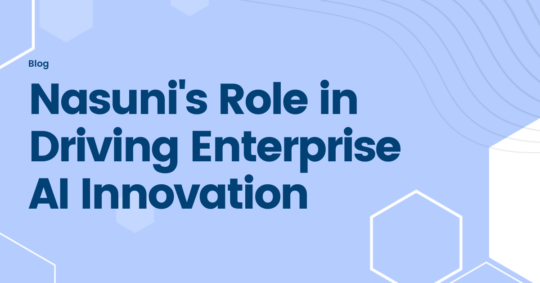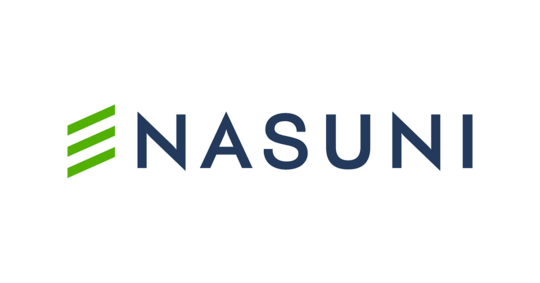Is Your Enterprise Organization Vibe Coding?
Nasuni’s Jim Liddle discusses the trend of vibe coding, and how enterprises can leverage it in their AI strategy.
April 9, 2025 | Jim Liddle

The term “vibe coding” is attributed to Andrej Karpathy, former OpenAI co-founder and Tesla AI lead. It represents a shift in the traditional programming paradigm. As Karpathy described it, vibe coding is when you “fully give in to the vibes, embrace exponentials, and forget that the code even exists.”
If we disregard the hyperbole and consider this in practical terms, vibe coding means:
- Using natural language (plain English) to communicate with AI tools that generate code
- Focusing on describing what is required rather than specific technical implementations
- Treating code as a fluid, easily changeable medium rather than a hard-to-learn / hard-to-implement artifact
AI development apps such as Cursor, Cline, Github Copilot, Claude Code and others transform natural language into functional code. What previously required deep technical expertise is now starting to become accessible through conversation. It’s changing both how programmers code and the number of people capable of generating code. Nasuni customers are uniquely positioned to take advantage of this new movement for reasons I’ll detail below, but first let’s look at why enterprise coders are adopting this approach.
Today, we are seeing widespread adoption of vibe coding across enterprises, driven by several compelling factors:
- Coding Productivity Gains: Y Combinator CEO Garry Tan described a revolutionary shift from “10x speedups” to “100x” productivity gains in just months. Teams that might have required 50-100 engineers can now accomplish similar results with just 10 vibe coders.
- Democratization of Development: The traditional barrier between “technical” and “non-technical” staff is starting to disappear. Product managers, designers, and business analysts can now directly contribute to code creation without formal programming training.
- Resource Optimization: Vibe coding allows organizations to stay leaner while accomplishing more. Y Combinator reports startups reaching $1-10 million in annual revenue with fewer than 10 employees — something “that’s really never happened before in early stage venture.”
- Competitive Necessity: As more organizations adopt these techniques, those who don’t risk being left behind. Forward-thinking companies are already adapting their recruitment criteria, recognizing that traditional metrics for evaluation are becoming outdated.
- Market Expansion: Vibe coding makes it economically viable to build solutions for previously underserved niche markets that were once considered too small to justify development costs, or to more easily build prototypes to facilitate better product feedback.
How Nasuni Facilitates Vibe Coding
For enterprise companies to fully capitalize on vibe coding with their domain data, they need a robust data infrastructure foundation. This is where Nasuni’s UniFS global file system delivers 4 critical advantages:
1. Consolidated Data Access Through a Global Namespace
Vibe coding thrives when developers have seamless access to all necessary resources, especially the enterprise data that they need to work with. Nasuni provides:
- A unified global namespace that eliminates data silos and enables consistent access to a company’s data from anywhere
- File synchronization that ensures all team members can work with the latest versions regardless of location
2. Collaborative Workflows Across Teams
As vibe coding blurs the lines between traditional roles, effective collaboration becomes essential. Nasuni enables:
- Real-time file sharing between technical and non-technical stakeholders irrespective of location
- Global access with local performance, allowing distributed teams to work together efficiently
- Version control that preserves the history of both human and AI-generated file (or code) changes
3. Enterprise-Grade Security for AI-Generated Code
With AI-assisted development comes new security considerations. Nasuni provides:
- End-to-end encryption for sensitive code and data
- Granular file access controls to protect intellectual property
- Comprehensive audit capabilities to track all file activity using Nasuni IQ
- Ransomware protection with immutable snapshots and rapid recovery
4. Scalable Infrastructure for Exponential Growth
As vibe coding accelerates development velocity, infrastructure needs can expand rapidly. Nasuni offers:
- Elastic scalability that accommodates growing storage requirements
- Performance optimization for data-intensive AI operations
- Cost-effective tiering strategies that balance accessibility and price
Strategic Implementation: Where Vibe Coding Excels and Where It Doesn’t
Understanding the strengths and limitations of vibe coding is essential for real world usage within an organization:
Ideal Use Cases for Vibe Coding
- Rapid Prototyping and Idea Testing: Quickly transform concepts into working prototypes without extensive coding.
- Front-End Development: Build and refine user interfaces through natural language descriptions.
- Automation of Repetitive Tasks: Generate code for routine ‘boiler plate’ operations to free up developer time.
- Bug Fixing and Maintenance: Use AI to understand existing code and implement fixes faster.
- Niche Market Applications: Economically develop solutions for specialized needs that previously couldn’t justify development costs.
When Traditional Approaches May Still Be Preferable
- Complex Algorithms and Systems: Complex algorithms may still require specialized human expertise.
- Highly Nuanced Programming: Situations requiring domain-specific optimizations beyond standard patterns.
- Sensitive Proprietary Systems: Code that contains trade secrets or highly confidential logic that shouldn’t be shared with external AI services.
- Debugging Complex Issues: As noted by Y Combinator partners, AI still struggles with sophisticated debugging, making human expertise a pre-requisite for troubleshooting.
The Future of Enterprise Coding
As vibe coding reshapes traditional development, we’re witnessing a major shift in how technical talent is valued and deployed.
- Product Intuition Over Pure Technical Skills: The most valuable team members will be those who bring the product vision rather than just coding skills.
- The Rise of the Product Engineer: The boundary between product and engineering is dissolving as both roles blend into a hybrid that leverages AI for implementation.
- System Architecture as the Key Differentiator: With AI handling implementation details, the ability to design robust, scalable systems becomes the premium technical skill – DevOps engineers and architects are likely to remain in high demand.
- Having a good understanding of coding will still be required: Good vibe coders will still need to know their way around code. Just accepting what an AI suggests is a recipe for disaster. The most effective vibe coders are people who are experienced enough to know how and when to deploy and when to reject or tweak its code suggestions. Junior developers often just accept AI output without reviewing or understanding why – another recipe for disaster. Experience is still required.
To summarize, with vibe coding teams can:
- Accelerate development cycles from months to days or hours
- Extend coding capabilities across traditionally non-technical teams
- Scale efficiently as development velocity increases
- Target new markets previously considered too niche to pursue
The question isn’t whether AI will transform coding — it already has. The real question is whether your company is positioned to ride this wave or be washed away by it.
Related resources

March 19, 2025 | Nick Burling
Nasuni’s Role in Driving Enterprise AI Innovation
Senior Vice President of Product Nick Burling shares how Nasuni plays a critical role in driving enterprise AI innovation.
Read more
Data foundation for AI
Nasuni’s hybrid cloud platform capabilities enhance your AI data strategy through consolidating, understanding, and leveraging your data.
Learn more
February 19, 2025 | Jim Liddle
The Last Frontier of AI Training: Delete or Preserve Enterprise Data?
Nasuni Chief Innovation Officer Jim Liddle discusses the debate of whether IT teams should delete or preserve historical enterprise data.
Read more